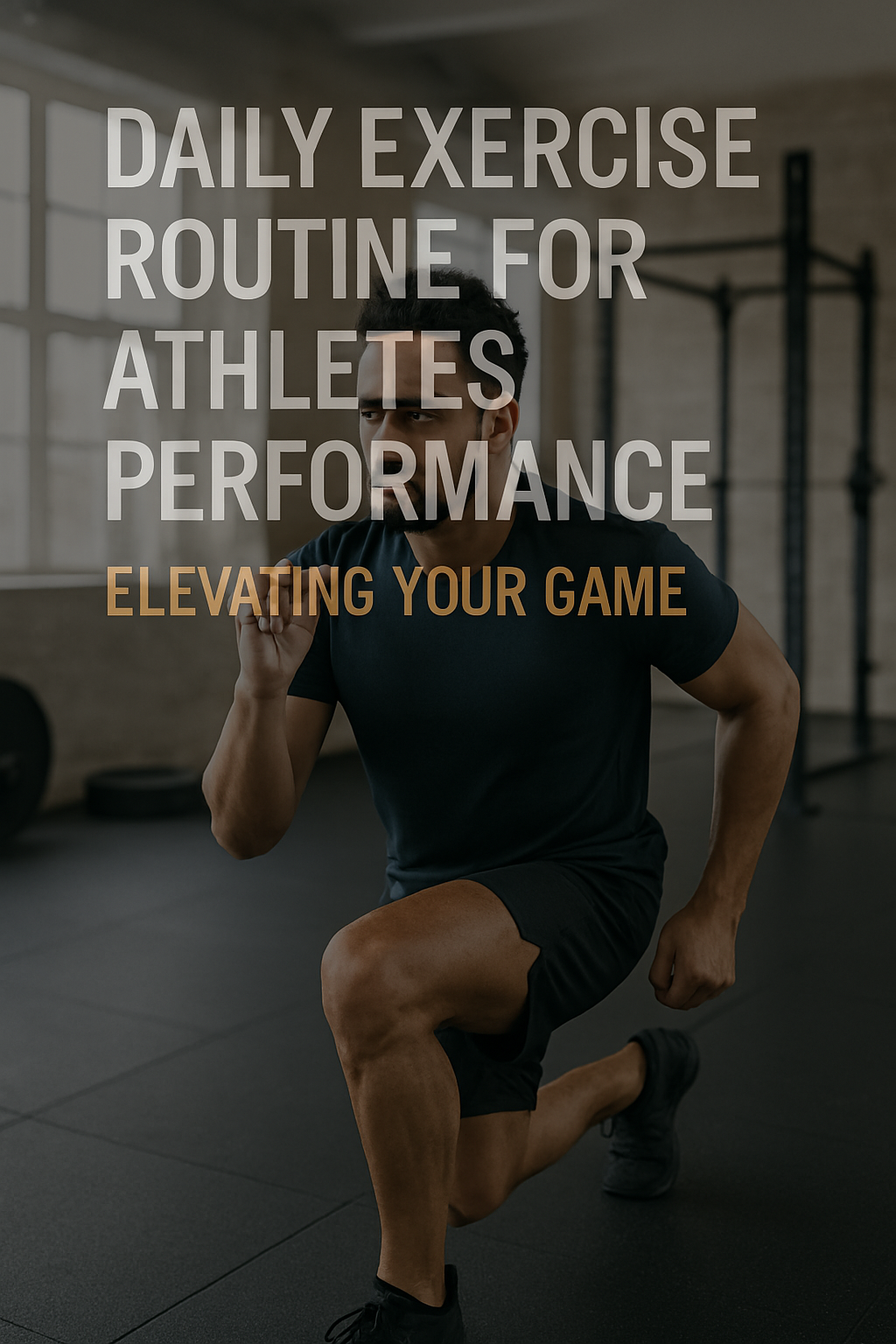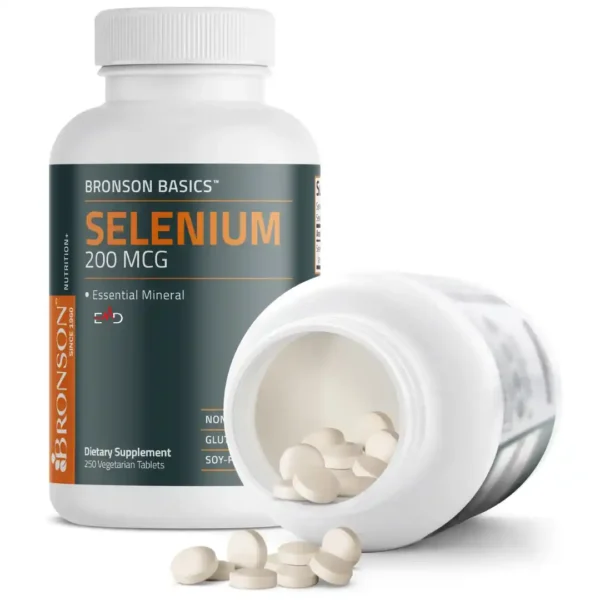Exercise daily – As athletes, the journey to peak performance isn’t an easy one. It requires hard work, dedication, and most importantly, an effective daily exercise routine. A well-structured workout plan can significantly enhance sports performance, athletic abilities, and overall physical strength. In this article, we’ll dive into the essential components of an athlete’s daily workout, how different exercises play a role in boosting performance, and the best training techniques to follow.
What Makes a Great Athlete’s Workout Routine?
An effective athlete workout plan must target every aspect of performance, from strength training to endurance and explosive power. It requires a balance between cardiovascular exercises, resistance training, and agility drills. But what exactly goes into a daily exercise routine for athletes?
Athletes focus on exercises that not only improve their muscular strength but also enhance speed, agility, and explosive strength. Training should be designed in a way that increases strength and conditioning, and addresses muscle groups for both upper and lower body strength. Moreover, the exercises must engage multiple muscle groups to yield the best results.
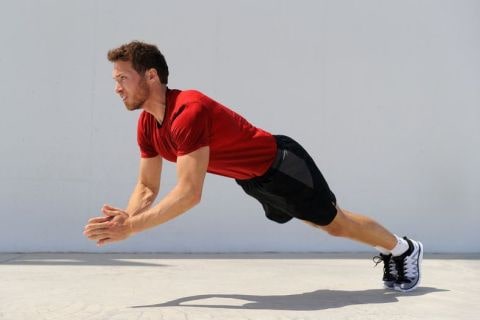
Why Daily Exercise is Crucial for Athletes
As an athlete, your body is your most valuable asset. Daily exercise ensures that your muscles are constantly adapting and getting stronger. The right combination of strength and conditioning is essential to help athletes prevent injury, gain muscle mass, and increase their endurance and flexibility. When the workout routine is consistent, it helps build the foundation for peak athletic performance.
Strength Training: Building a Solid Foundation
One of the pillars of an athlete’s daily exercise routine is strength training. But it’s not just about lifting heavy weights – it’s about performing the right strength training exercises to maximize athletic performance.
Squats and Deadlifts: Core Strength for Athletes
Both the squat and deadlift are powerful exercises that engage multiple muscle groups at once. These exercises are great for building lower body strength, which is essential for almost every sport. The deadlift works the glutes, hamstrings, and lower back, while the squat strengthens the quadriceps, hamstrings, and core muscles. Together, these exercises help improve strength and power.
Bench Press and Dumbbell Press: Upper Body Strength
Upper body strength is also a vital part of an athlete’s workout. The bench press targets the chest, shoulders, and triceps, while dumbbell presses help improve overall muscle mass in the arms and chest. These exercises are crucial for sports that require upper body strength like rugby, basketball, and swimming.
Progressive Overload: Building Strength Over Time
To maximize gains, athletes must apply the principle of progressive overload to their strength training exercises. This means gradually increasing the resistance, whether by adding more weight or increasing repetitions. Progressive overload ensures that muscles are consistently challenged, leading to continuous growth in strength and muscle mass.
Explosive Power Training for Athletes
Explosive strength plays a crucial role in sports performance, especially in sports that require bursts of speed and agility. Explosive exercises focus on developing quick, powerful movements that engage the fast-twitch muscle fibers.
Plyometrics: Jump Higher, Run Faster
Plyometric exercises, such as box jumps and broad jumps, are excellent for developing explosive power. These exercises teach your muscles to contract quickly and efficiently, leading to improvements in sprinting, jumping, and overall athletic performance.
Sprints and Speed Drills
Sprint training is a core component of explosive strength development. Short sprints, interval training, and hill sprints are excellent for increasing both speed and power. They enhance the body’s ability to apply maximum force in minimal time, which is essential for athletes in sports like football, soccer, and track.
Power Cleans: Boosting Athletic Performance
The power clean is a dynamic movement that develops both strength and explosive power. It works the entire body, improving coordination, strength, and speed. By incorporating the power clean into your workout routine, you’ll build the strength needed for rapid, powerful movements on the field or court.
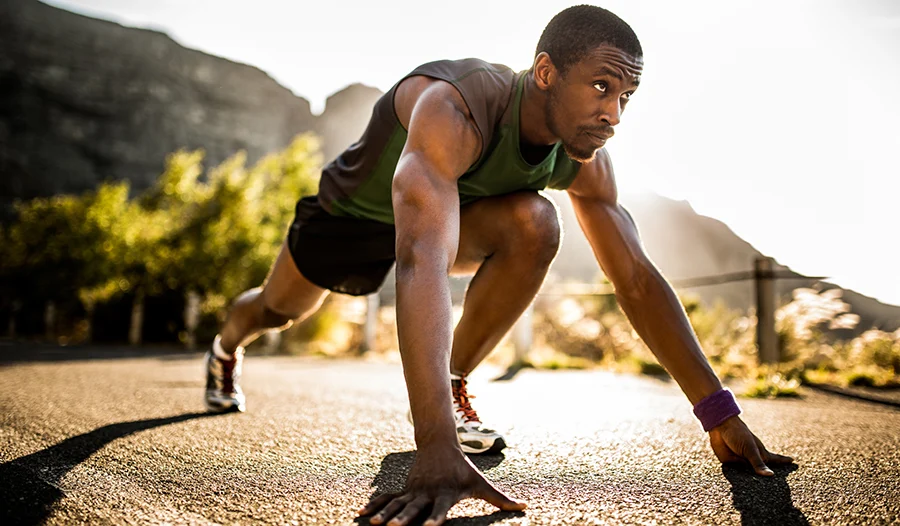
Endurance Training for Long-Term Performance
While explosive strength and power are crucial, an athlete’s performance also depends on endurance. For many sports, sustaining high levels of performance over an extended period is just as important as explosive movements.
Cardio and Aerobic Workouts
Incorporating cardiovascular exercises like running, cycling, or swimming into your daily workout routine will improve your endurance and overall performance. These exercises are designed to increase your stamina, allowing you to perform at a high level throughout your sport.
Resistance Training for Endurance
In addition to cardiovascular workouts, resistance training helps athletes build the endurance needed for sustained efforts. Exercises such as lunges, resistance band training, and circuit workouts are great for improving muscular endurance.
How to Avoid Injury While Training for Athletes
Athletes face the risk of injury if they don’t take proper precautions. A proper training regimen and recovery plan are essential to reduce the risk of injury and ensure long-term athletic success.
Warm-Up and Cool-Down Exercises
Before beginning any workout, athletes should always perform a warm-up to get the blood flowing and prepare muscles for action. A simple warm-up routine includes light jogging, dynamic stretches, and mobility drills. Afterward, a cool-down with static stretching helps reduce muscle tightness and promotes recovery.
Listen to Your Body: Rest and Recovery
Training hard is essential, but rest is equally important. Athletes should incorporate recovery days into their workout plans to allow their muscles time to repair and grow. Overtraining can lead to burnout and an increased risk of injury. A balance of work and recovery is key to long-term success.
Creating a Training Plan for Athletes
Every athlete is different, and so should their workout routine. The ideal training program should focus on an athlete’s specific needs, whether it’s improving speed, strength, or endurance. Here’s how to build an athlete workout plan:
-
Determine Your Goals: Are you focusing on strength, endurance, or speed? Set clear, measurable goals.
-
Incorporate Different Types of Exercise: Combine strength training, explosive drills, and cardio to ensure a balanced approach.
-
Use Progressive Overload: Gradually increase weights, reps, or intensity to challenge your muscles and improve performance.
-
Recovery Is Key: Plan rest days and proper sleep to avoid overtraining.
Consult a Personal Trainer
If you’re unsure about your workout routine, consulting a personal trainer can be a game-changer. A trainer can design a program tailored to your needs, ensuring you reach your full potential without putting yourself at unnecessary risk.
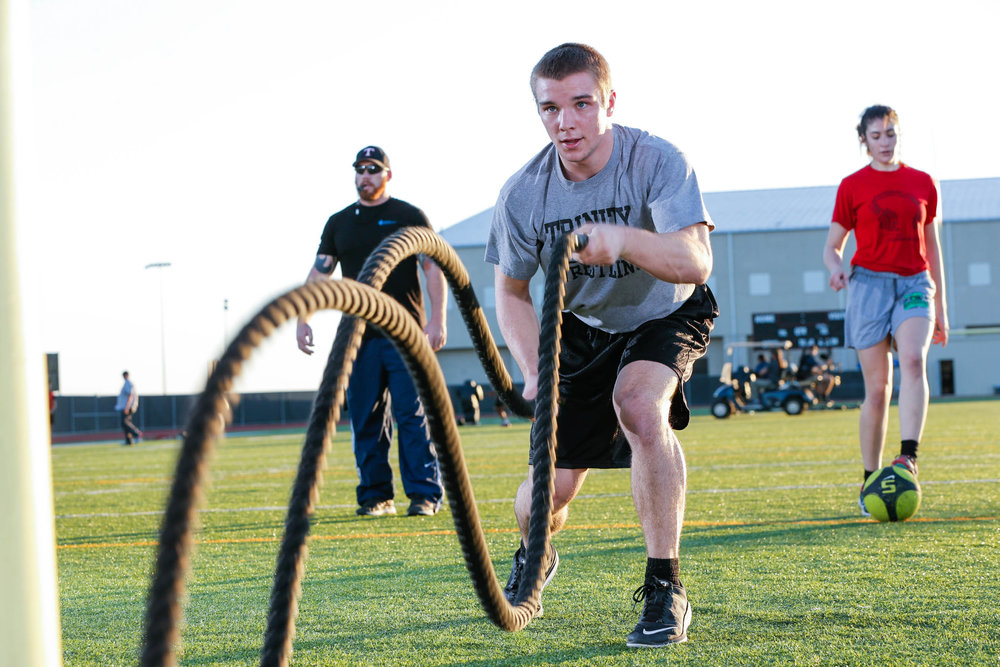
The Importance of Nutrition in Your Training Routine
Nutrition plays an integral role in an athlete’s performance. A well-balanced diet, rich in protein, carbs, and healthy fats, helps fuel the body for intense workouts and enhances recovery. A nutrition plan should be aligned with your training regimen to ensure that your body is properly fueled and able to recover optimally.
Conclusion
Training for athletic performance involves a balanced approach to strength, power, endurance, and recovery. Whether you’re an aspiring athlete or a professional, following a well-rounded workout routine tailored to your goals is essential for success. By incorporating strength training, explosive exercises, and proper recovery, you’ll be on your way to peak athletic performance in no time. Remember, consistency is key – stay dedicated, and always keep pushing yourself to improve!
FAQs – Daily Exercise Routine for Athletes’ Performance
Q: How can I improve my sports performance?
To improve your sports performance, focus on a balanced routine that includes strength training, explosive drills, and cardio. Consistency and proper recovery are essential.
Q: What is the best workout for athletes?
The best workout for athletes includes a combination of strength training (squats, deadlifts), explosive exercises (sprints, box jumps), and cardiovascular training for endurance.
Q: How do I avoid injury during training?
Incorporate proper warm-up and cool-down routines, listen to your body, and ensure you have rest days to reduce the risk of injury.
Q: What is the role of nutrition in an athlete’s workout?
Nutrition fuels the body for workouts and helps in recovery. A balanced diet with adequate protein, carbs, and fats is essential for maintaining energy levels and improving performance.
Q: How long should my workout routine be each day?
A daily workout routine for athletes typically ranges from 60 to 90 minutes, depending on the intensity and focus of the exercises. Always balance workout time and recovery.

